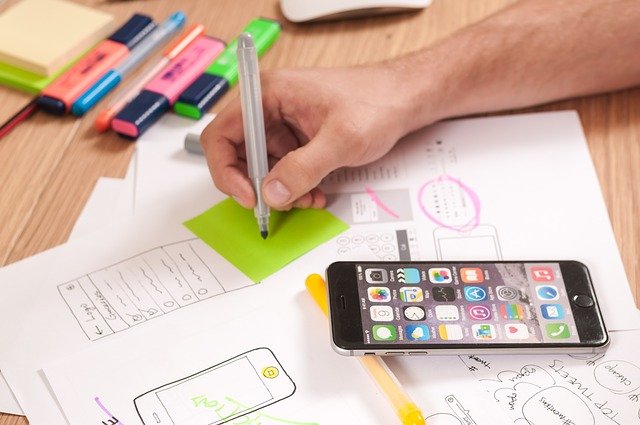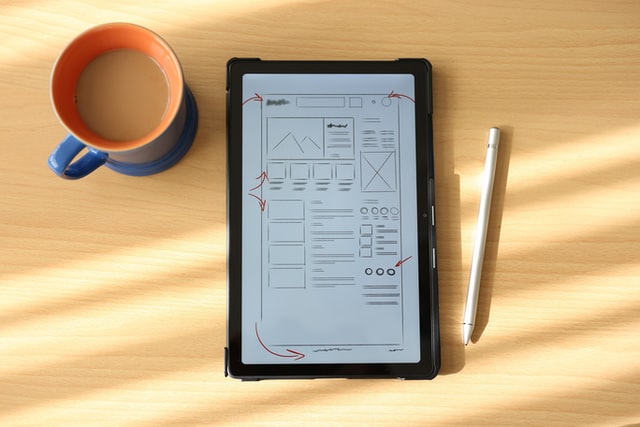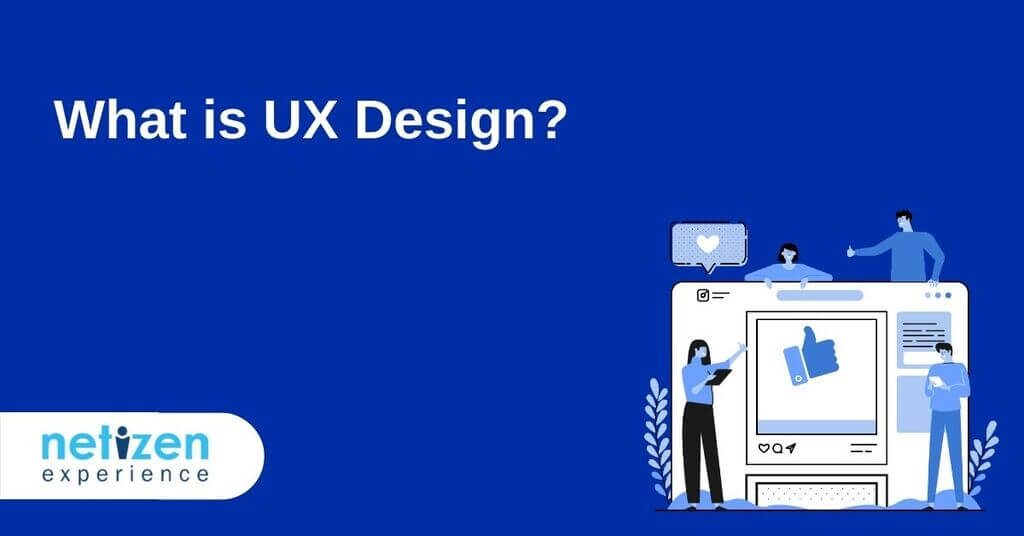[et_pb_section fb_built="1" _builder_version="4.16" global_colors_info="{}" theme_builder_area="post_content"][et_pb_row _builder_version="4.16" background_size="initial" background_position="top_left" background_repeat="repeat" global_colors_info="{}" theme_builder_area="post_content"][et_pb_column type="4_4" _builder_version="4.16" custom_padding="|||" global_colors_info="{}" custom_padding__hover="|||" theme_builder_area="post_content"][et_pb_text _builder_version="4.27.0" background_size="initial" background_position="top_left" background_repeat="repeat" hover_enabled="0" global_colors_info="{}" theme_builder_area="post_content" sticky_enabled="0"]
Over the last couple of decades, technologies have become increasingly intricate, with the functionality of apps and websites becoming broader and more complex.
The first websites were simply static pages that delivered information to feed curious searchers.
However, the tide has drastically changed a few decades later, as sites are more interactive and offer a much richer feel for different user bases.
A large part of this ‘richer feel’ pertains to the evolution of user experience (UX) design.
While seemingly complicated, this discipline encompasses different user elements from accessibility to wireframing to cater to users’ emotions about a product. So, let’s delve in more, shall we?

UX Design
To kick off, let's first define user experience.
User experience (UX) revolves around a person's emotions, actions and attitudes when using a specific product, system or service.
UX encompasses the practical, effective, experiential, meaningful and valuable elements of human-computer interaction and product ownership.
Consequently, user experience design (UED or XD) are a set of activities that seek to enhance user satisfaction by improving usability, accessibility, and pleasure derived from the interaction between a user and a product.
Fundamentally, UX design incorporates knowledge from multiple disciplines, including:
- Interaction design
- Cognitive science
- Human factors engineering (HFE)
- Computer science
- Industrial design
- Psychology
- Anthropology
- Sociology
- Graphic design
UX design essentially considers every element that shapes how users feel, and how easy it is for users to accomplish their desired tasks. This can be from how a physical product feels in users’ hands, to how straightforward a checkout process is when buying something online.
The goal of UX design is to create an efficient, easy to use, relevant and an all-round positive experience for each user. Thus, improving customer satisfaction and loyalty via usability and the pleasure provided in the interaction with a product.
What does a UX Designer do?
A UX designer is a professional who investigates, researches, and analyses how users feel about products or software applications. In some organisations, UX designers have the luxury of UX researchers to help with the user research while they focus on the design of the user journey.
UX designers apply the user insights they learned to product development to ensure that users have the best possible experience with a product.
UX designers also strategise and share with other members of the product development team their findings, and monitor development projects to ensure their findings are well implemented.
UX practitioners focus their efforts in understanding the relationship between human users and computer-based products. These include websites, applications and systems— to create seamless user experiences for products and services. They help build a bridge to the end customer, helping a business to better understand and fulfil the customer’s needs and expectations.
Tools used by UX designers
UX professionals’ work includes user market research, sketching, wireframing, interaction design, visual design, user testing, prototyping, and continuous iterations on designs.
For the most part, UX designers usually rely on a number of different tools to execute their work. For example, at the research stage, they can use survey and polling tools, and video chat software to interview users and gather actionable data.
Though the most popular tools used by UX designers are programs for wireframing, prototyping and usability testing like InVision, Adobe XD, Figma and Balsamiq.
The UX design process
The UX design process mainly has five key stages, namely:
Product definition
This phase of UX design occurs before the product design team creates anything. Before you build a product, it’s important to understand the context for its existence. The product definition stage helps set the foundation for the final product.
This phase includes:
- Stakeholder brainstorming sessions and interviews to gather insights about business goals.
- Value proposition mapping to determine what the product is, who shall use it, and why they will use it. Essentially, value propositions enable the team and stakeholders to create a consensus around what the product will be, and how to match users and business needs.
- Concept sketching to create an early mockup of the future product (for example, low-fidelity paper sketches of a product’s architecture).
Product research
After defining the idea, the product team then moves to the research phase. This phase usually includes user research and market research.
Overall, seasoned UX designers consider research as a good investment that informs design decisions to save the organisation money down the road.
However, product research typically depends on the intricacy of the product and timing, and can include:
- Individual in-depth interviews (IDI) to derive qualitative data about the target audience like their needs, wants, fears, motivations, and behaviours.
- Competitor research and benchmarking to understand industry standards and identify specific opportunities for the product within its niche.
Product analysis
The analysis phase aims to draw actionable insights from data collected during the research phase. During this particular stage, UX designers confirm if the team’s most important assumptions are indeed correct.
This stage of the UX process includes:
- Storyboarding.
- Creating user personas.
- Creating user stories.
Product design
After confirming users’ wants, needs, and expectations from a product, UX designers can then move to the design phase. This stage involves various activities, from creating information architecture (IA) to UI design.

An effectual design phase is highly collaborative (involving active participation from all team players) and iterative (cycles back upon itself to validate ideas).
The design phase includes:
- Sketching
- Creating prototypes.
- Creating wireframes.
- Creating a design specification.
Validation/Testing
The validation stage helps teams understand whether their design is applicable and acceptable to their users. Usually, this phase starts after the high-fidelity design is finished.
This is because testing with high-fidelity designs delivers more valuable feedback from end-users. But we have also seen many teams that invest in smaller user testing rounds on wireframes or low fidelity clickable prototypes to get earlier insights to guidement their design refinement.
During user testing sessions, the team carefully validates the product with both stakeholders and end-users using:
- Surveys
- Testing sessions
- Analytics across quantitative data (such as number of clicks, navigation time, search queries, etc.)
Benefits of a good UX design
In the early days of the internet, product design was much simpler as designers built products they thought were awesome and cool.
However, there was far less competition for users’ attention online. Secondly, there was no direct consideration for users of the product at all. Actually, the success or failure of a project was down to luck and the judgement of the design team.
In today's fast-paced tech-driven world, UX focuses on the user to increase the chances of a project's success when it finally hits the market. Partnering with a professional UI/UX design agency can ensure your design is user-centered and meets the highest standards.
So, what are the benefits of a great UX design?
- UX helps companies to discover the goals of their audience: During research into UX design, UX designers will get a lot of opinions. These can shape your website design goals and help you define your customer base by creating personas.
This can also help an organisation to analyse who will most likely visit their site, and once they figure this out, they can easily provide a good user experience.
- Augmented customer satisfaction and engagement: The better the experience one creates for their customers, the happier they will be. And the opposite is true.
A bad experience will make customers more frustrated with what you’re providing them. And consequently, they shall be less likely to recommend your offering to friends and family.
- User Experience affects the product itself, not just its promotion: There is a vital difference between digital marketing and user experience. Generally, marketing is about making people want things, UX design is about making things people want.
- Lower cost of support: An easy to use and logical interface, service, process, or product doesn’t require extensive help documentation, and support staff on standby. In turn, this translates into cost savings on people devoted to support and user assistance.
UX Design Examples
There are several vital factors that affect the overall experience a user has with a product:
- Usefulness: Is the product helpful, with a clear purpose?
- Aesthetics: Is the visual appearance of the site and its design appealing to the user?
- Emotions: Are positive emotional feelings evoked in response to the product?
- Usability: Is the product easy to use
- Learnability: Is the product simple to master quickly, with minimal instruction?
To a large extent, the quality of a user experience can make a difference whether a company succeeds or fails.
For instance, consider some companies that have failed in the last decade like Yahoo! It wasn't only disruption or technological advances to blame, but failure to continually consider the user's needs.
Yahoo! introduced substantial clutter on their homepage. In turn, rather than allowing users to complete simple tasks like a search or email check, this disrupted the user experience.
[/et_pb_text][/et_pb_column][/et_pb_row][/et_pb_section][et_pb_section fb_built="1" _builder_version="4.20.0" _module_preset="default" global_colors_info="{}" theme_builder_area="post_content"][et_pb_row column_structure="3_4,1_4" use_custom_gutter="on" gutter_width="4" make_equal="on" disabled_on="on|on|off" admin_label="Row" _builder_version="4.19.5" _module_preset="default" background_color="#f0f0f0" width="100%" custom_padding="|25px|0px|25px|false|false" custom_css_main_element="display: flex;" global_colors_info="{}" theme_builder_area="post_content"][et_pb_column type="3_4" _builder_version="4.19.4" _module_preset="default" global_colors_info="{}" theme_builder_area="post_content"][et_pb_text content_tablet="
Respondent Recruitment Services For Representative User Insights
" content_phone="" content_last_edited="on|desktop" _builder_version="4.20.0" _module_preset="default" header_font_size="42px" width="100%" custom_margin_tablet="" custom_margin_phone="" custom_margin_last_edited="on|phone" custom_padding="||0px|5%|false|false" header_font_size_tablet="42px" header_font_size_phone="42px" header_font_size_last_edited="on|desktop" header_2_text_color_tablet="" header_2_text_color_phone="" header_2_text_color_last_edited="on|desktop" global_colors_info="{}" theme_builder_area="post_content"]
UI/UX Design Services
[/et_pb_text][/et_pb_column][et_pb_column type="1_4" _builder_version="4.19.4" _module_preset="default" global_colors_info="{}" theme_builder_area="post_content"][et_pb_image src="https://cdn.netizenexperience.com/wp-content/uploads/2023/01/NX-logo.png" title_text="NX-logo" align="center" disabled_on="on|on|off" _builder_version="4.19.5" _module_preset="default" width="100%" module_alignment="right" custom_padding="24px|4px|||false|false" custom_padding_tablet="24px|4px|||false|false" custom_padding_phone="24px|4px|||false|false" custom_padding_last_edited="on|desktop" global_colors_info="{}" theme_builder_area="post_content"][/et_pb_image][/et_pb_column][/et_pb_row][et_pb_row use_custom_gutter="on" gutter_width="4" make_equal="on" disabled_on="off|off|on" admin_label="Row" _builder_version="4.19.5" _module_preset="default" background_color="#f0f0f0" width="100%" custom_padding="|25px|0px|25px|false|false" custom_css_main_element="display: flex;" global_colors_info="{}" theme_builder_area="post_content"][et_pb_column type="4_4" _builder_version="4.19.4" _module_preset="default" global_colors_info="{}" theme_builder_area="post_content"][et_pb_image src="https://cdn.netizenexperience.com/wp-content/uploads/2023/01/NX-logo.png" title_text="NX-logo" align="center" show_bottom_space_tablet="" show_bottom_space_phone="" show_bottom_space_last_edited="on|phone" disabled_on="off|off|off" _builder_version="4.20.0" _module_preset="default" width="100%" module_alignment="left" custom_margin="|70px||70px|false|false" custom_padding="24px||||false|false" custom_padding_tablet="24px|180px||180px|false|false" custom_padding_phone="24px|60px||60px|false|false" custom_padding_last_edited="on|desktop" global_colors_info="{}" theme_builder_area="post_content"][/et_pb_image][et_pb_text content_tablet="
Respondent Recruitment Services For Representative User Insights
" content_phone="
UI/UX Design Services
" content_last_edited="on|phone" _builder_version="4.20.0" _module_preset="default" header_font_size="42px" width="100%" custom_margin_tablet="" custom_margin_phone="" custom_margin_last_edited="on|phone" custom_padding="||0px||false|false" header_font_size_tablet="42px" header_font_size_phone="42px" header_font_size_last_edited="on|desktop" header_2_text_color_tablet="" header_2_text_color_phone="" header_2_text_color_last_edited="on|desktop" global_colors_info="{}" theme_builder_area="post_content"][/et_pb_text][/et_pb_column][/et_pb_row][et_pb_row _builder_version="4.19.4" _module_preset="default" background_color="#f0f0f0" custom_padding="|50px||50px|false|false" global_colors_info="{}" theme_builder_area="post_content"][et_pb_column type="4_4" _builder_version="4.19.4" _module_preset="default" global_colors_info="{}" theme_builder_area="post_content"][et_pb_text _builder_version="4.20.0" _module_preset="default" global_colors_info="{}" theme_builder_area="post_content"]
Key Highlights
- Provides UX design services for businesses & organizations
- Uses a human-centered design approach to create digital products that meet users' need
- Conduct research to understand users' needs
- Create wireframes & prototypes to test and refine a design
- Conducts product analysis, validation & testing
[/et_pb_text][/et_pb_column][/et_pb_row][et_pb_row column_structure="1_2,1_2" module_class="key-highlights" _builder_version="4.20.1" _module_preset="default" background_color="#f0f0f0" custom_padding="0px|||||" custom_css_main_element="display: flex;" border_color_all="RGBA(255,255,255,0)" border_width_right="25px" border_width_left="25px" locked="off" global_colors_info="{}" theme_builder_area="post_content"][et_pb_column type="1_2" _builder_version="4.19.4" _module_preset="default" global_colors_info="{}" theme_builder_area="post_content"][et_pb_button button_url="https://www.netizenexperience.com/ux-design/" url_new_window="on" button_text="LEARN MORE" button_alignment="center" _builder_version="4.20.2" _module_preset="default" custom_button="on" button_text_size="16px" button_text_color="#000000" button_bg_color="#ffc947" button_border_width="0px" button_border_radius="0px" button_font="|600|||||||" button_icon="5||divi||400" global_colors_info="{}" theme_builder_area="post_content"][/et_pb_button][/et_pb_column][et_pb_column type="1_2" _builder_version="4.19.4" _module_preset="default" global_colors_info="{}" theme_builder_area="post_content"][et_pb_button button_url="https://www.netizenexperience.com/contact-us/" url_new_window="on" button_text="CONTACT US" button_alignment="center" _builder_version="4.19.4" _module_preset="default" custom_button="on" button_text_size="16px" button_text_color="#000000" button_bg_color="#ffc947" button_border_width="0px" button_border_radius="0px" button_font="|600|||||||" button_icon="5||divi||400" global_colors_info="{}" theme_builder_area="post_content"][/et_pb_button][/et_pb_column][/et_pb_row][/et_pb_section][et_pb_section fb_built="1" _builder_version="4.16" global_colors_info="{}" theme_builder_area="post_content"][et_pb_row _builder_version="4.16" background_size="initial" background_position="top_left" background_repeat="repeat" global_colors_info="{}" theme_builder_area="post_content"][et_pb_column type="4_4" _builder_version="4.16" custom_padding="|||" global_colors_info="{}" custom_padding__hover="|||" theme_builder_area="post_content"][et_pb_text _builder_version="4.20.2" background_size="initial" background_position="top_left" background_repeat="repeat" global_colors_info="{}" theme_builder_area="post_content"]
Conclusion
Though often confused, UI and UX aren’t the same but are separated by their focus on interfaces versus interactions.
As has been noted, UX design focuses on designing (digital or physical) products that are easy to use, and delightful to interact with. UX design aims to enhance the experience that users have while interacting with a product, and ensure they find value in what you’re providing.
Overall, as an art and science, UX design aims to generate positive emotions through product interactions.
The central goal for good user experience design is to keep engaging users to purchase/subscribe or continue coming back to the site for similar queries. Finally, remember a good UX design also always seeks to improve from the user feedback gotten.
Reach us at Netizen Experience for UI/UX design services in Malaysia.
[/et_pb_text][/et_pb_column][/et_pb_row][/et_pb_section]





